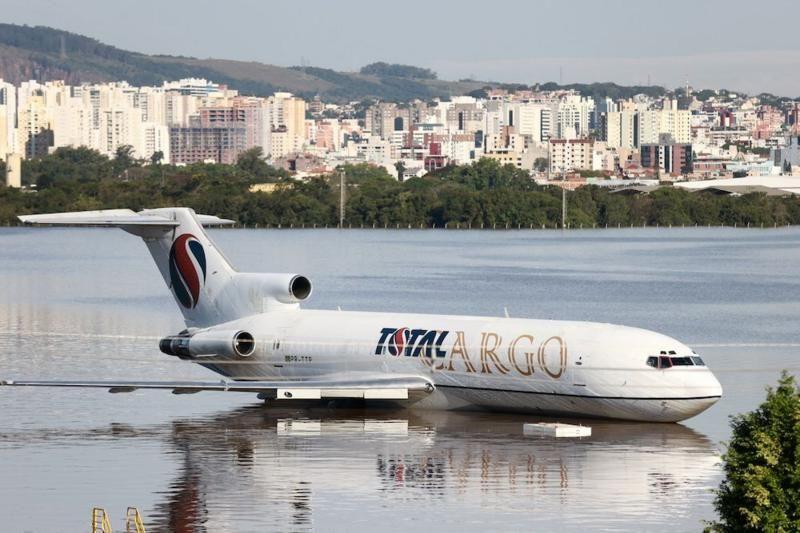
By BBC News World
May 7, 2024, 7:33 PM EDT
Floods, destruction and death.
The heavy rains that have hit the state of Rio Grande Do Sul, located in southern Brazil, since last week have caused the death of at least 85 people and displaced more than 150,000.
The government of this region estimates that more than one million citizens were affected by the atmospheric phenomenon.
In addition to the deaths, the authorities register 361 injured and 132 missing.
Precipitation and flooding destroyed roads and bridges in several cities, while causing landslides and the collapse of a small dam at a hydroelectric plant.
Satellite images show how some of the main rivers in Rio Grande do Sul have overflowed and abandoned their beds.
In Canoas, a city located in the metropolitan region of Porto Alegre and with almost 350,000 inhabitants, the streets of several neighborhoods were “swallowed” by water.
On Sunday, Brazilian President Luiz Inácio Lula da Silva visited the disaster area and commented that “all powers and levels of government are working together in this time of emergency.”
While the governor of the state, Eduardo Leito, indicated that the number of victims could increase in the coming days as rescue teams access more affected areas.


Why is it raining so much?
Meteorologists interviewed by BBC News Brazil explain that the intense rains recorded in Rio Grande do Sul in recent days are the result of a combination of three main factors:
- A trough (intense wind current) that operates in the region, creating a very unstable climate.
- A corridor of humidity from the Amazon, which increased the intensity of precipitation.
- A heat wave in the central region of the country.
“This mass of hot air over the central area of the country blocked the cold front that is in the southern region, preventing it from advancing and spreading to other locations. The combination of these factors causes this instability to persist over the state, causing intense and continuous rain,” explains Dayse Moraes, meteorologist at the country’s National Institute of Meteorology.

In the same way, the period between the end of April and the beginning of May 2024 is still influenced by the “El Niño” phenomenon, responsible for the warming of the waters of the Pacific Ocean, contributing to areas of instability over the state.
Experts consider this confluence of several factors to be unusual.
Likewise, the catastrophic rains in the south are directly related to the heat wave recorded in the central-western and southeastern regions, where temperatures are around 5 ° C above average this autumn.
“With the intensification of global climate change, extreme climate events will be more frequent and intercurrent,” adds Rafael de Ávila Rodrigues, professor and climatologist at the Institute of Geography of the Federal University of Catalão (Ufcat).




Keep reading:
* Thousands of citizens in southern Brazil seek refuge from floods that have left at least 79 dead
* Video: Tornado destroys industrial warehouse in Nebraska with 70 employees inside
* When does the hurricane season start in the United States in 2024

Beam click here to read more stories from BBC News Mundo.
You can also follow us on Youtube, Instagram, TikTok,X, Facebook and in our new whatsapp channelwhere you will find breaking news and our best content.
And remember that you can receive notifications in our app. Download the latest version and activate them.
- Bolivia’s Copacabana, the ancient city of the Incas that gave its name to one of the most famous beaches in Brazil
- Brazil and Colombia drastically reduce their deforestation levels
- Terra preta: the mystery of the origin of the “black gold” of the Amazon
